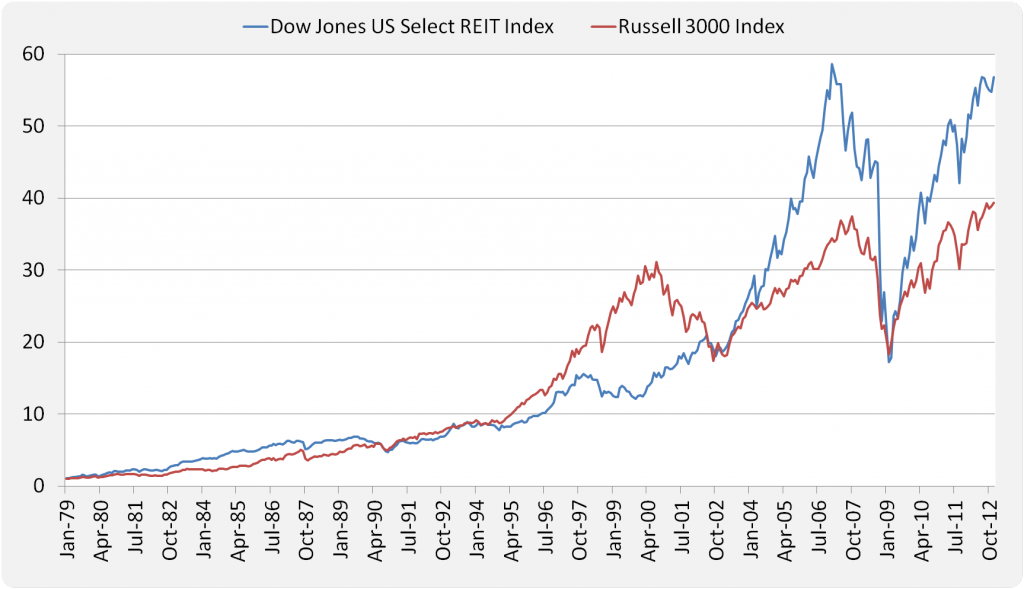After the boom, bust, and subsequent rally of real estate values over the previous decade, the idea of real estate as an investment vehicle was pushed into the foreground for many investors. However, unlike stocks and bonds, it isn’t always apparent how to invest in real estate. The traditional method had been to purchase private real estate, either as an individual owner or through a private equity fund. Both of these methods come with significant risks. As an owner, it is necessary to account for maintenance of the property, taxes and security, as well as any tenant-related issues. Private real estate funds generally have high fees, and often offer low liquidity and a lack of diversification. The other common method of investing in real estate is through a REIT (real estate investment trust), and these investment vehicles will be the subject of this Investment Product Review.
A real estate investment trust is a corporation or trust that acts as an investment agent specializing in real estate. A REIT that invests 75% or more of its assets in private real estate or in stocks of companies that own real estate is known as an equity REIT1. Public REITs are listed on stock exchanges, and can be traded like any other fund. The REIT structure allows these companies to operate in a manner similar to mutual funds, as well as enabling them to avoid most (if not all) corporate taxes2. However, to qualify as a REIT, the fund must pay out at least 90% of taxable income as dividends. This distribution structure results in an asset class that generates a large amount of income, but is not particularly tax-efficient.
Though often considered as an “alternative” asset class, REITs have been in existence since 1960. While REITs have “equity-like” characteristics, they provide some diversification benefits as well, having a 30 year correlation of about 59% with U.S. equities3. REITs tend to be more volatile than equities, and correspondingly have a higher expected return (see Figure 1).
Real estate is an important sector of the economy, and the REIT structure allows for investment in this asset class without high costs or a loss of liquidity. For these reasons, Empirical allocates a small portion of our equity portfolios (around 5-10%) to REITs, both domestic and international. Real estate can be quite volatile, as evidenced by the Financial Crisis in which REITs suffered a drawdown of over 60% in one year, only to return in excess of 110% the following year. Because real estate can be risky, it is not prudent to make it a large part of an investment strategy, but it can be beneficial as a diversifying asset class with high return potential in a well-balanced portfolio.


